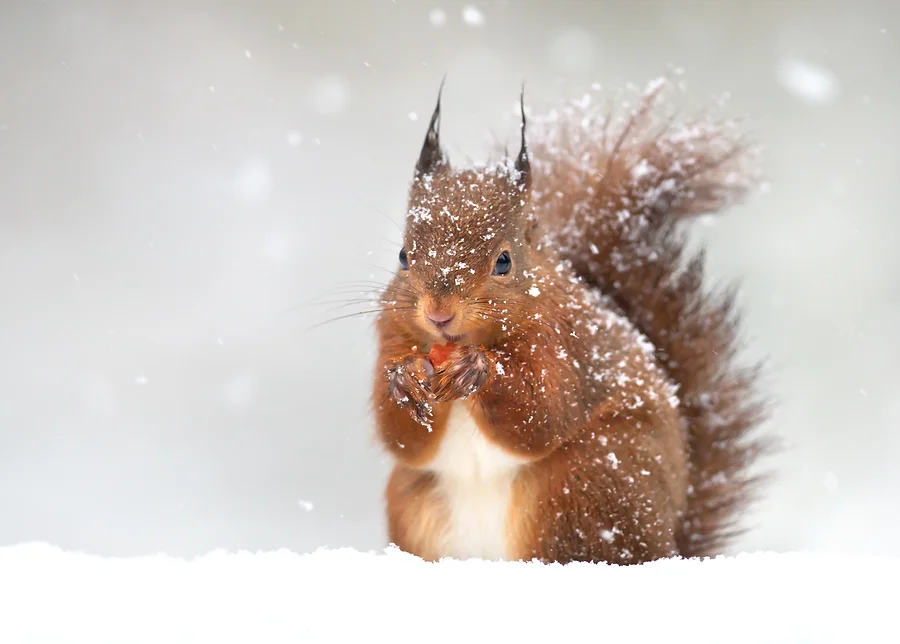How do wild animals survive in low temperatures in the UK and what you can do to help
Wild animals survive a UK winter by doing one (or more) of three things: by migrating (think birds such as ospreys which travel to Africa to overwinter; by hibernating (hedgehogs, bats, amphibians or insects for example) or just by tolerating it (foxes, stoats, many wild bird species). For those who just have to get on with it, they really do struggle when temperatures dip and they use up a lot of their fat reserves just staying warm.


Birds
At this time of year, our garden birds need calorie rich foods such as suet, dripping fat, peanuts, as well as fallen fruit. Avoid the shop bought seed mixes if possible. Its better to make your own! And use hanging feeders as well as ground feeders to enable a range of bird species to feed. The crucial thing to remember is that if you feed birds you MUST keep doing it throughout the winter. It is also critical to keep bird feeders scrupulously clean (hot water and strong detergent) to avoid disease spread.
You may even see rarer birds such as redwings, bullfinches or waxwings in colder weather.
Your choice of garden plants also helps – having lots of berry laden shrubs and bushes is beneficial – ivy and rowan are two great choices as their berries are the favourite fruit of some bird species, such as redwings and song thrushes, and are ripe throughout winter.
Amphibians and reptiles
Our common amphibians and reptiles such as toads, frogs and newts don’t hibernate as such, but go into torpor, which is a semi-awake state. For these animals, log piles and leaf piles are critical hiding places, as are compost heaps. You can help by not disturbing these places in your garden and even creating them at this time of year will help.


Mammals
It’s a sad fact but half of all hedgehogs die in their first winter. Most starve, through not having enough fat reserves, although increasing numbers are waking from hibernation in milder winters, which uses up the fat reserves they need to survive. To help hedgehogs, leave those log and leaf piles undisturbed over winter or use a hedgehog house (made in autumn)
(see www.britishhedgehogs.org.uk ).
Be careful when considering whether to feed large mammals such as deer or foxes and do your research on the pros and cons. Its difficult to watch, but the death of weaker animals in winter strengthens the gene pool and is a natural process. Also attracting numbers of one species to an area increases the risk of disease spread.
Finally, don’t forget the water source – top up bird baths and make sure they are ice free.
